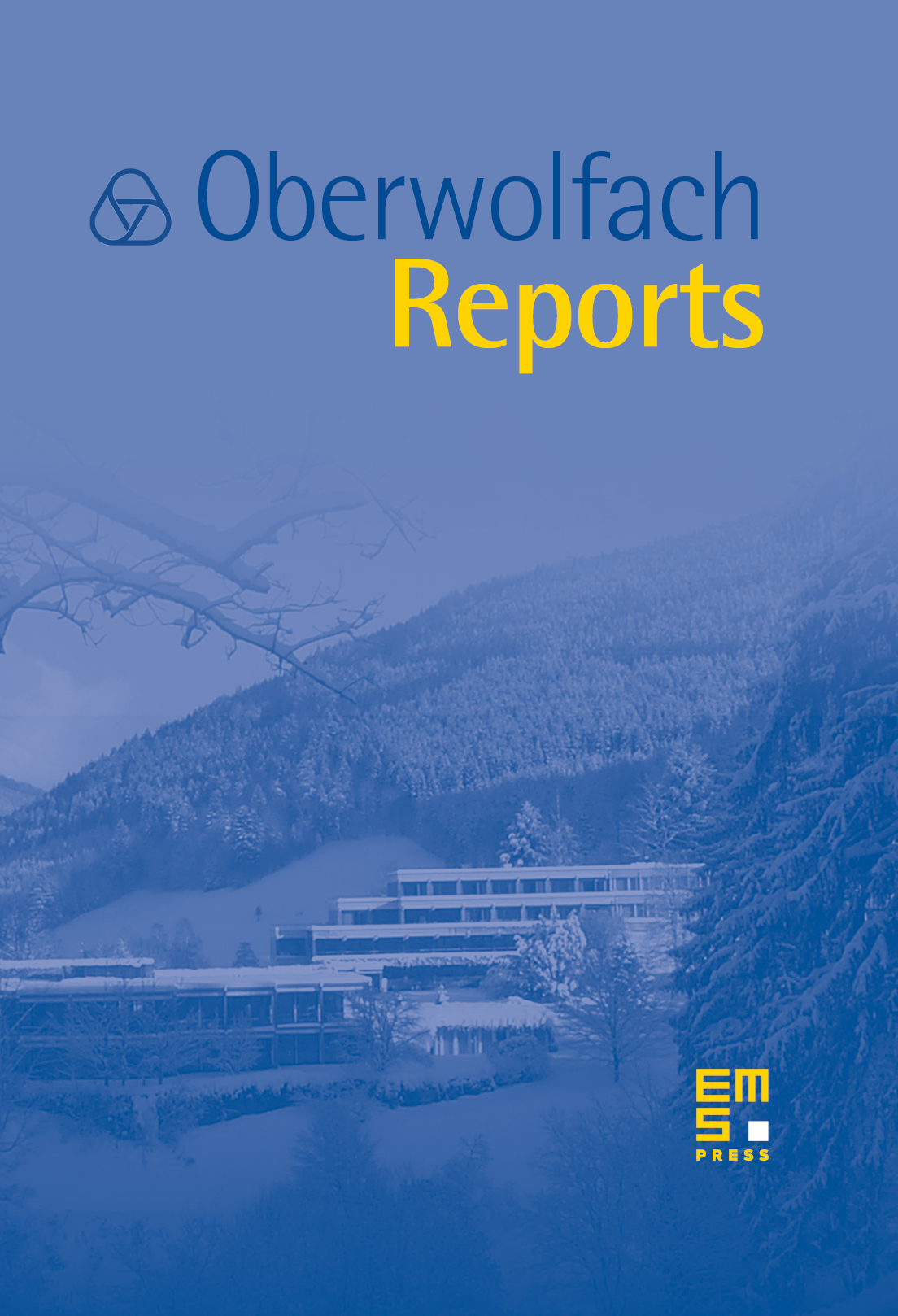Thermodynamische Materialtheorien
Kolumban Hutter
Technische Hochschule Darmstadt, GermanyIngo Müller
Technische Universität Berlin, GermanyLev Truskinovsky
Ecole Polytechnique, Palaiseau, France

Abstract
The workshop was well-attended with 46 participants of which 9 gave keynote lectures and 25 gave short contributions. After most lectures there were lively discussions to which all attendants contributed.
The overall theme was thermodynamics which, as a universal theory, may be – and was – applied to different types of phenomena and materials, viz.
- plasticity
- visco-plasticity
- creep
- fracture
- fatigue
- phase transitions in solids
- nucleation
- porous materials
- epitaxy
- ferroelectricity
- shape memory alloys
- melting
- surface tension
- liquid crystals
- liquid crystal polymers
- entropic elasticity
- lattice elasticity
- rarefied gases
- shock propagation
- light scattering
- fluid mixtures.
The participants had a varied background: Some were physicists and engineers, others applied mathematicians. The former were mostly interested in modelling of material properties and simulation of observed processes. They generally tended to make their models as simple as possible. The mathematicians took an interest in the properties of the model equations, provided that they offered a challenge to the analyst, or that they permitted the application of their analytical tools.
This dichotomy of the audience was intended by the organizers, of course, and it led to lively discussions. Thus it was hotly debated whether good mathematics should be wasted on bad physics. Or whether it is justifiable to construct mutilated, or arbitrarily extended physical models such that they be amenable for the analytical toolbox. The question arose of what value an existence and uniqueness proof is for non-realistic models.
Another case in point is the regularization of originally hyperbolic equations as they occur in the kinetic theory of gases and in extended thermodynamics. It was debated whether it is worthwhile to smooth out solutions artificially, rather than investigate how nature manages the problem of avoiding jumps.
It could not be expected that such discussions reach an agreeable conclusion but - perhaps - they served to break up questionable ideas in both groups of participants; ideas, that have become all too comfortable and well-accommodated in their minds. The dialogue will be continued in the future between communities that ordinarily do not overlap; this may in fact be an important outcome of the meeting.
There was an evening lecture by Prof. W. Bürger on toys – boomerangs, spinning tops and rattlebacks. Everybody seems to have enjoyed that lecture.
Cite this article
Kolumban Hutter, Ingo Müller, Lev Truskinovsky, Thermodynamische Materialtheorien. Oberwolfach Rep. 1 (2004), no. 4, pp. 2971–3036
DOI 10.4171/OWR/2004/55